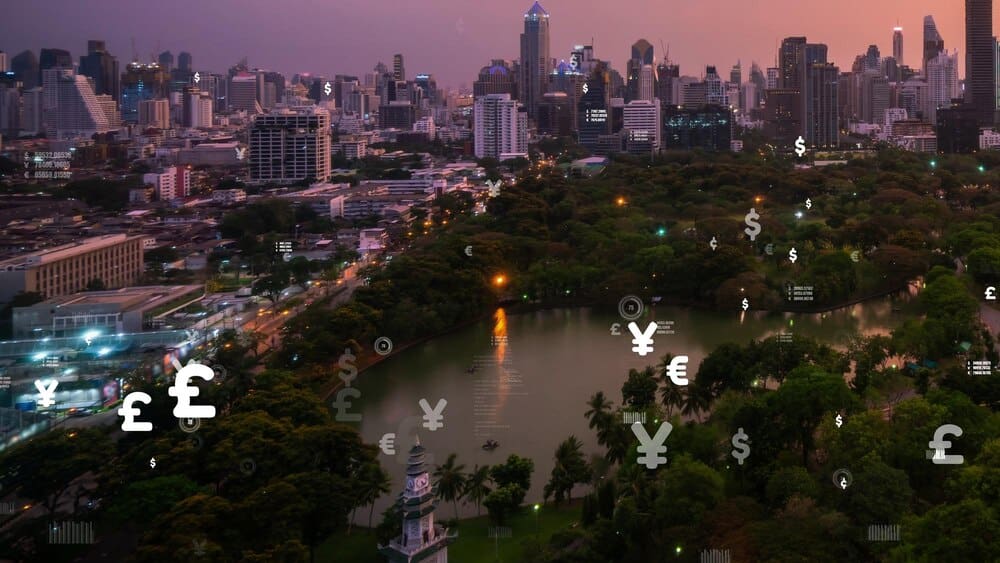Miami, a city at the epicenter of both climate change risk and a historic capital migration, is rapidly emerging as a global hub for a new, more aggressive form of green finance. Fueled by an influx of venture capital, a wave of tech talent, and the urgent reality of its environmental vulnerability, Miami’s FinTech ecosystem is moving beyond the passive, report-card-style approach of traditional ESG (Environmental, Social, and Governance) investing. Instead, local startups and financiers are actively building the technological and financial infrastructure to directly fund, track, and scale tangible sustainability projects, pioneering a proactive model of sustainable investing that aims to turn climate risk into a generational investment opportunity.
The Climate Capital: Why Miami?
For decades, cities like New York, London, and Zurich have dominated global finance. However, the unique confluence of environmental pressure and economic momentum in South Florida is forging a new identity for the city: a capital of climate finance.
This transformation is not accidental. It is born from necessity. As a low-lying coastal metropolis, the Miami metro area is on the front lines of climate change, facing the tangible threats of sea-level rise, more powerful hurricanes, and saltwater intrusion into its freshwater aquifer. This constant, visceral reminder of climate risk creates a powerful incentive for innovation that does not exist with the same urgency in other financial centers.
This environmental reality serves as a living laboratory for developers, engineers, and financiers. The problems are not abstract; they are visible in the “king tides” that flood city streets and the rising costs of property insurance. This has created a localized demand for solutions in resilient infrastructure, water management, and sustainable real estate, creating a fertile ground for technologies that can address these challenges.
The Great Tech Migration Fuels Green Ambition
Layered on top of this environmental urgency is an unprecedented economic boom. The pandemic accelerated a major migration of talent and capital to South Florida, with prominent venture capital firms like Andreessen Horowitz (a16z), Founders Fund, and Craft Ventures establishing a significant presence. This influx, dubbed the “capital of capital” movement, has brought billions of dollars in new investment-seeking opportunities.
Unlike established financial hubs with entrenched interests, much of this new capital is nimble, tech-focused, and looking for the next major growth sector. Climate tech and green finance fit that description perfectly. The narrative has shifted from Miami being a place to spend money to a place to build the future, and a sustainable future is a core part of that vision.
Local leadership, notably from Miami Mayor Francis Suarez, has amplified this trend by actively courting the tech and finance industries with a business-friendly, low-regulation message. This has created a welcoming ecosystem where a FinTech startup with a novel idea for a carbon credit marketplace can get a meeting with a top-tier venture capitalist in the same week.
Beyond ESG Box-Ticking: The Miami Approach
For years, sustainable investing was largely defined by ESG principles. This often meant a process of negative screening, where investment funds would simply exclude companies in undesirable sectors like fossil fuels, tobacco, or firearms. While well-intentioned, critics argue this approach is passive and its real-world impact is difficult to measure.
The emerging Miami model represents a philosophical shift from this passive exclusion to active creation. It is less about avoiding the “bad” and more about building and funding the “good.” This new wave of green finance is defined by its focus on measurable impact, technological innovation, and the democratization of sustainable assets.
Focus on Tangible Assets and Technology
Instead of just buying stock in a publicly traded solar company, Miami’s green FinTech scene is creating platforms that allow for direct investment in tangible projects. These platforms leverage technology to vet, fractionalize, and offer investments in specific, verifiable assets.
Examples of these asset classes include financing for a new solar farm in Central Florida, funding for a mangrove restoration project in the Florida Keys to act as a natural storm surge barrier, or investing in a startup developing concrete with a lower carbon footprint for climate-resilient construction. The goal is to connect capital directly to projects with a clear and quantifiable environmental benefit.
The Role of Tokenization and Blockchain
A key enabler of this new model is financial technology itself, particularly blockchain and asset tokenization. Blockchain, a distributed and immutable digital ledger, offers a powerful solution to one of the biggest problems in green finance: trust and transparency.
By tokenizing a real-world asset—like a square meter of reforested land or a future carbon credit from a renewable energy project—FinTech platforms can create unique, traceable digital tokens. This has several profound implications.
First, it dramatically increases liquidity. A large, illiquid asset like a wind farm can be digitally divided into millions of tokens, allowing small-scale retail investors to participate in ownership. This democratizes access to green investments that were previously only available to institutional investors.
Second, it enhances transparency. Every transaction involving a tokenized carbon credit, for instance, is recorded on the blockchain. This creates a permanent, auditable trail that can prevent problems like double-counting—where the same carbon offset is sold to multiple buyers—and helps combat the pervasive issue of “greenwashing.”
Spotlight on Miami’s Green FinTech Innovators
This theoretical framework is already being put into practice by a growing number of startups in the region. These companies are building the rails for this new financial system.
One archetype is the Climate Investment Platform. These are mobile-first applications that feel more like a modern brokerage app than a traditional fund. Users can browse a marketplace of vetted projects—from community solar to direct air capture technology—and invest amounts as small as $50. The platform’s value is in its due diligence and its impact reporting, showing users exactly how many kilograms of CO2 their specific investment is projected to offset.
Another emerging model is the Sustainable Real Estate FinTech. These firms use AI and vast datasets to analyze the climate risk of properties and developments. They then work to create innovative financial products, such as “green mortgages” that offer preferential rates to buyers of energy-efficient or climate-resilient homes, or financing for developers using sustainable building materials.
Finally, Miami is becoming a hub for the next generation of Carbon Marketplaces. Leveraging its position as a gateway to Latin America, which has vast natural carbon sinks like the Amazon rainforest, these platforms use blockchain to create trusted, high-quality carbon credits. They connect corporations seeking to meet their climate pledges with verified nature-based projects, ensuring the money flows to effective and permanent carbon removal efforts.
Challenges and the Road Ahead
Despite the immense promise, the path forward is not without its obstacles. The specter of “greenwashing”—making misleading claims about environmental benefits—remains a significant threat to investor trust. The Miami ecosystem’s emphasis on technological verification and transparency is a direct response to this, but it will require constant vigilance and the establishment of industry-wide standards.
Regulatory uncertainty also looms large. As these new financial products, like tokenized green assets, blur the lines between commodities, securities, and currencies, regulators like the Securities and Exchange Commission (SEC) will need to provide clear guidance. How these digital assets are classified and regulated will have a major impact on the industry’s ability to scale.
Furthermore, while the talent migration has been substantial, the demand for individuals with expertise at the intersection of climate science, software engineering, and financial structuring is intense. Sustaining this momentum will require continued investment in education and workforce development within the region to cultivate a deep pool of specialized talent.
Ultimately, Miami’s burgeoning FinTech scene is doing more than just participating in the green finance conversation; it is actively shaping its future. By leveraging its unique position at the nexus of climate risk and technological innovation, the city is pioneering a more direct, transparent, and impactful model of investing. It is moving beyond simply scoring the old economy and is instead focused on financing the new one, positioning Miami not just as a sun-drenched paradise, but as a critical hub in the global effort to build a sustainable economy.







